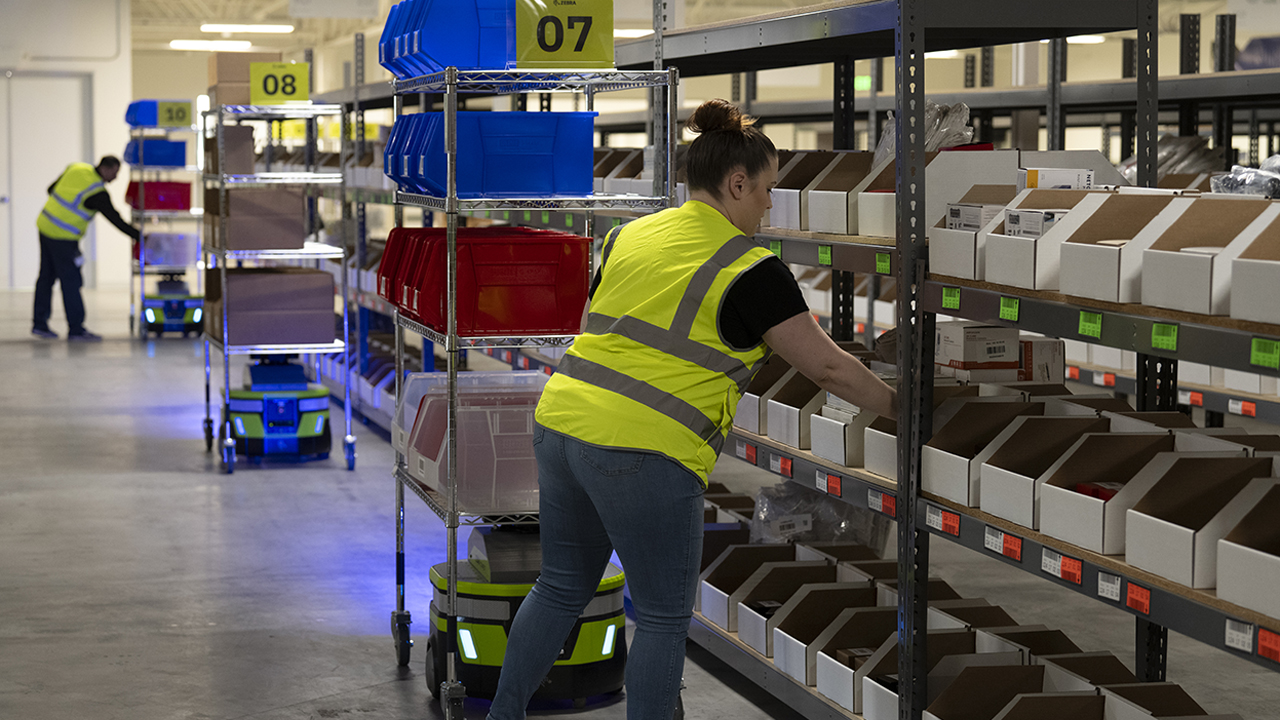
Retailers: If You’re Leaving AI Out of Pricing Strategy Decisions, You’re Leaving Money on the Table
There’s not an easy way to optimize inventory levels or improve margins, and sell-through, without AI. So, why not bring AI in to help inform your decisions?
Are you using AI to inform or guide your pricing strategy?
It offers concrete financial benefits thanks to three (exclusive) capabilities: granular demand forecasting, advanced price elasticity modeling, and dynamic markdown optimization.
Could a human do these things?
With enough time…maybe.
But why wait that long? There are significant margin and revenue improvement opportunities right now. With AI, you can seize them immediately. Traditional pricing models make it nearly impossible to see gains. Integrating AI models into your current systems eliminates the time it would take to get a person upskilled and positioned well enough to deliver well-informed pricing recommendations.
One fashion retailer we work with implemented AI pricing in only 16 weeks, integrating it into their existing ERP system. The AI-powered module fed optimized pricing recommendations directly into the retailer’s planning system, allowing planners to quickly review and approve adjustments. This approach provided a 5% margin lift within three months without disrupting ongoing operations.
Could a human deliver the same results on the same timeline without AI assistance?
Probably not.
But this example is just one of many I have to share.
How Your Team Can Work with AI to Drive Better Pricing Decisions and Improve Margins
There are three types of AI that can help you determine and execute effective pricing strategies:
- Generative AI (GenAI) models
- Machine learning algorithms
- Cognitive AI models
GenAI
Well-trained GenAI models have proven to be successful at predicting pricing trends, generating alternative pricing strategies, and simulating the impact of different promotional strategies on consumer behavior. They have also impressed many retailers with their ability to generate and test alternative pricing strategies before someone commits the team to executing those strategies without evidence that they’ll have any impact on buying decisions.
In one example, a global fashion retailer used generative AI to create personalized discount strategies for Black Friday promotions.
The result: A 12% lift in revenue and 9% improvement in profit margins compared to previous years.
The AI analyzed:
● Historical sales and past promotional performance
● Competitor pricing trends
● Customer purchasing behavior by region
It also generated multiple pricing campaign simulations (e.g., flash sales, tiered discounts, and personalized pricing) and identified the optimal discount structure.
Machine Learning
Similarly, some retailers are using machine learning algorithms to continuously refine pricing models based on historical sales data, past promotions, and real-time changes in consumer demand. One of the big benefits of machine learning pricing models is that they improve over time by continuously analyzing large datasets to refine pricing decisions.
This has helped a high-end sneaker brand effectively manage dynamic pricing for fast-selling inventory, including a limited-edition collection that was launched despite high demand uncertainty. Traditional pricing would have used fixed markdown schedules, potentially leaving revenue on the table.
However, the machine learning-driven pricing model:
● Detected an initial surge in demand
● Predicted a sales plateau at current prices
● Recommended gradual markdowns instead of deep discounts
The result: Real-time pricing optimization that led to a 15% higher sell-through at full price and a 10% increase in total revenue.
Cognitive AI
Finally, there is a growing need to use Cognitive AI, which takes into account external influences such as economic conditions, competitive pricing, local events, and shifting consumer sentiment to enhance pricing decisions. Integrating external variables such as economic shifts, local events, and social media trends without Cognitive AI is unfeasible, and these are highly influential factors on buying decisions and, therefore, pricing.
There was a national retailer selling winter coats which faced challenges in optimizing markdowns due to regional weather variability.
The retailer decided to use Cognitive AI to:
● Integrate real-time weather forecasts
● Identify areas expecting colder-than-average temperatures
● Adjust pricing in regions where winter demand was likely to spike
The AI suggested the retailer delay markdowns in cold-weather regions, which it did.
The result: The retailer extended full-price sales by three weeks, improving gross margin by 7%.
What to Keep in Mind When Making AI-Driven Pricing Decisions
To maximize profitability and efficiency, an AI-powered pricing solution must go beyond static markdown schedules and basic demand projections. So, it’s important to look for solutions that offer:
- Granular demand forecasting at the SKU-store day level
- Advanced price elasticity modeling
- Dynamic markdown optimization
It should also integrate seamlessly into your ERP and planning systems since the AI is only as smart (and helpful) as the data it can access. AI needs unfettered access to clean data. (Emphasis on “clean.”)
Why are these things so important?
Let me share a few more examples that speak to the necessity of each type of AI…
Granular Demand Forecasting at the SKU-Store-Day Level
Traditional Challenge:
You can hope high-level demand forecasts, often calculated at the category or regional level, are good enough. However, it’s no secret these models lack precision and fail to account for store-specific and hyper-local demand variations.
AI Advantage:
AI-powered pricing solutions forecast demand at the SKU-store-day level, allowing you to tailor pricing based on real-time sales trends, localized demand patterns, and inventory levels at each store.
Use Case Example:
A fashion retailer used AI to detect store-level demand trends for women's boots. Urban stores were selling out quickly, while suburban stores had excess inventory. Instead of blanket markdowns, the retailer optimized pricing by maintaining full-price sales in high-demand areas and discounting selectively in slower-moving stores.
The result: The retailer delivered an 18% improvement in sell-through and a 9% increase in margin.
Advanced Price Elasticity Modeling
Traditional Challenge:
You must rely on simple price elasticity formulas that fail to capture the full impact of price changes on different customer segments, product categories, and market conditions.
AI Advantage:
AI-powered pricing dynamically measures true price elasticity by incorporating:
● Historical sales data
● Historical promotion data
● External data (competitor pricing, economic trends, and seasonality)
● Stockout and anomaly detection
Use Case Example:
A luxury handbag brand reduced unnecessary markdowns by implementing AI-driven price elasticity modeling. Instead of a flat 30% markdown at the end of each season, AI identified that a 15% discount on bestsellers and a 40% markdown on slower-moving SKUs would maximize revenue.
The result: The brand had a 12% reduction in margin loss while accelerating inventory clearance.
Dynamic Markdown Optimization
Traditional Challenge:
Use of pre-set markdown calendars that reduce prices in fixed increments without regard to any demand signals or inventory levels (e.g., 20% off after four weeks, 40% off after eight weeks).
AI Advantage:
AI dynamically adjusts markdowns in real-time based on inventory levels, sales velocity, and external demand signals.
Use Case:
A fashion retailer launched a holiday collection expecting strong demand. However, AI-driven analytics detected slower-than-expected sales in certain styles. Instead of deep discounts across the board, the AI recommended a 10% discount online and a 25% discount in underperforming stores.
The result: The retailer drove a 15% margin improvement and a 30% sell-through increase.
In Other Words
If you do not have AI assisting you with your pricing strategy today, you are leaving money and margin on the table, as evidenced by the use cases above and many other examples of companies who have leveraged AI’s fast modeling capabilities to increase their revenue and improve margins.
It’s also important to remember that not all AI pricing systems require you to rip and replace what you have. There are modules that can augment your existing ERP and planning systems. (All the examples above were retailers who augmented with AI rather than replacing old systems with new ones.)
Let me know if we can help you figure out the best way to integrate AI into your demand forecasting and pricing models. You may also find this information helpful.






